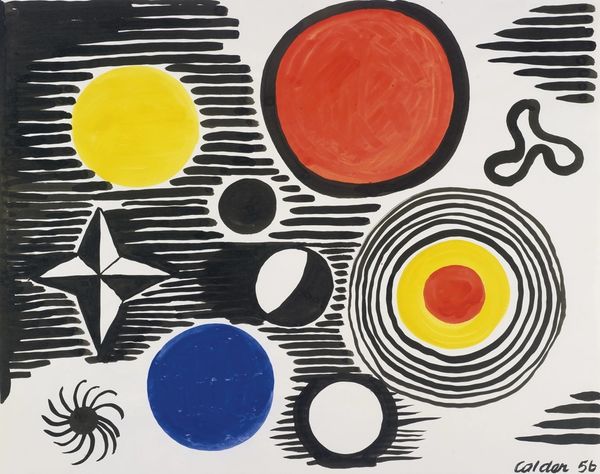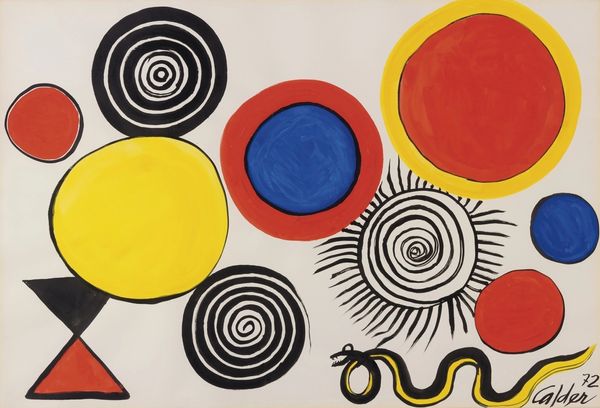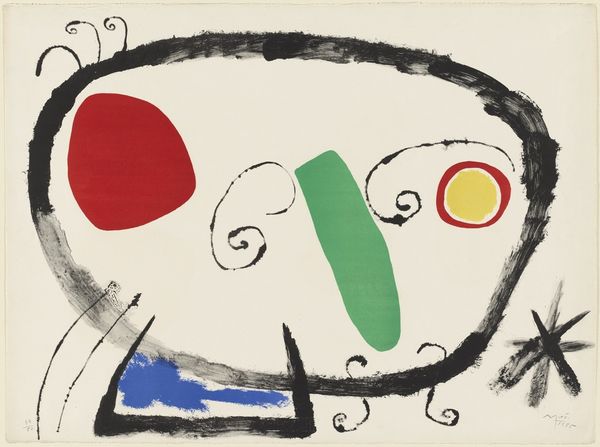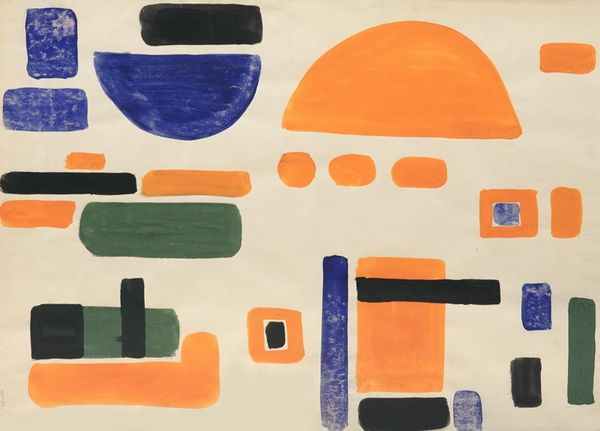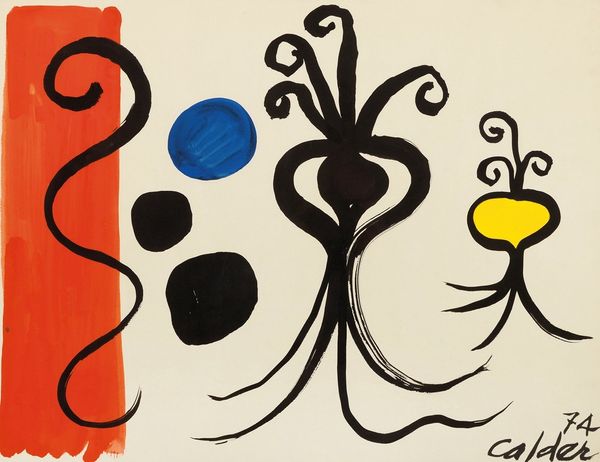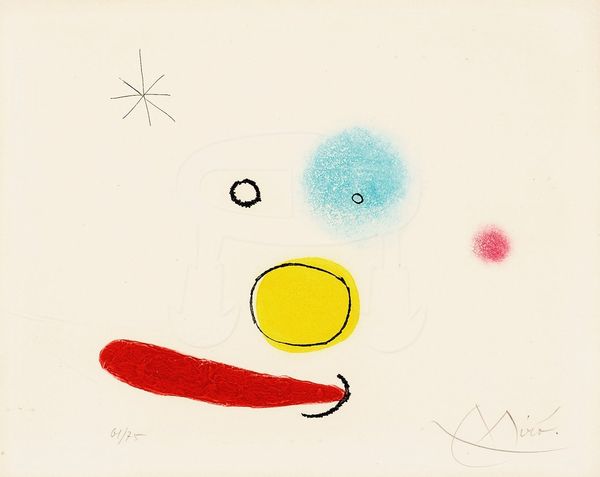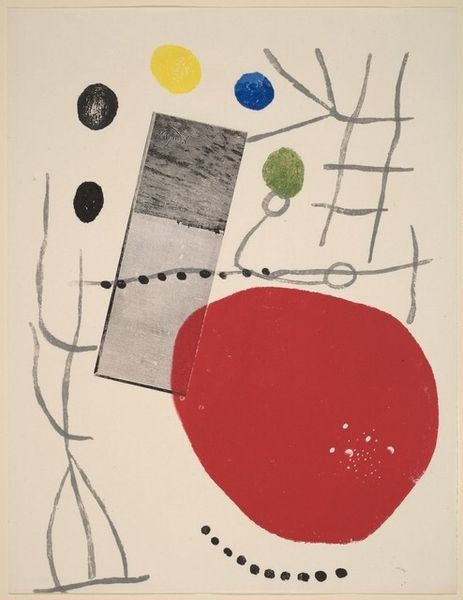
mixed-media, print
#
mixed-media
# print
#
abstract
#
art-informel
#
surrealism
#
modernism
Copyright: Modern Artists: Artvee
Joan Miró made "Je n’ai jamais appris à écrire ou les incipit," which translates to "I never learned to write or the beginnings," using lithography, a printmaking technique where an image is drawn on stone and then printed. Miró was a Catalan artist working in Spain and France in the early to mid-20th century. The title of this work seems to critique traditional institutions of learning. Miró’s biomorphic shapes and seemingly random arrangements of abstract forms are a deliberate rejection of academic artistic conventions and perhaps an embrace of a childlike freedom of expression. It is important to consider the cultural and political contexts in which this print was made. As an artist working through two world wars, the rise of fascism in Europe, and the Spanish Civil War, Miró was deeply critical of traditional social structures. "Je n’ai jamais appris à écrire ou les incipit" might be seen as a utopian vision of a world liberated from the constraints of formal education and social conformity. To fully understand Miró’s art, we can consult a range of resources, including his writings, the writings of art critics, and historical accounts of the artistic and political movements of his time. This kind of research helps us appreciate how art both reflects and shapes the culture in which it is created.
Comments
No comments
Be the first to comment and join the conversation on the ultimate creative platform.
